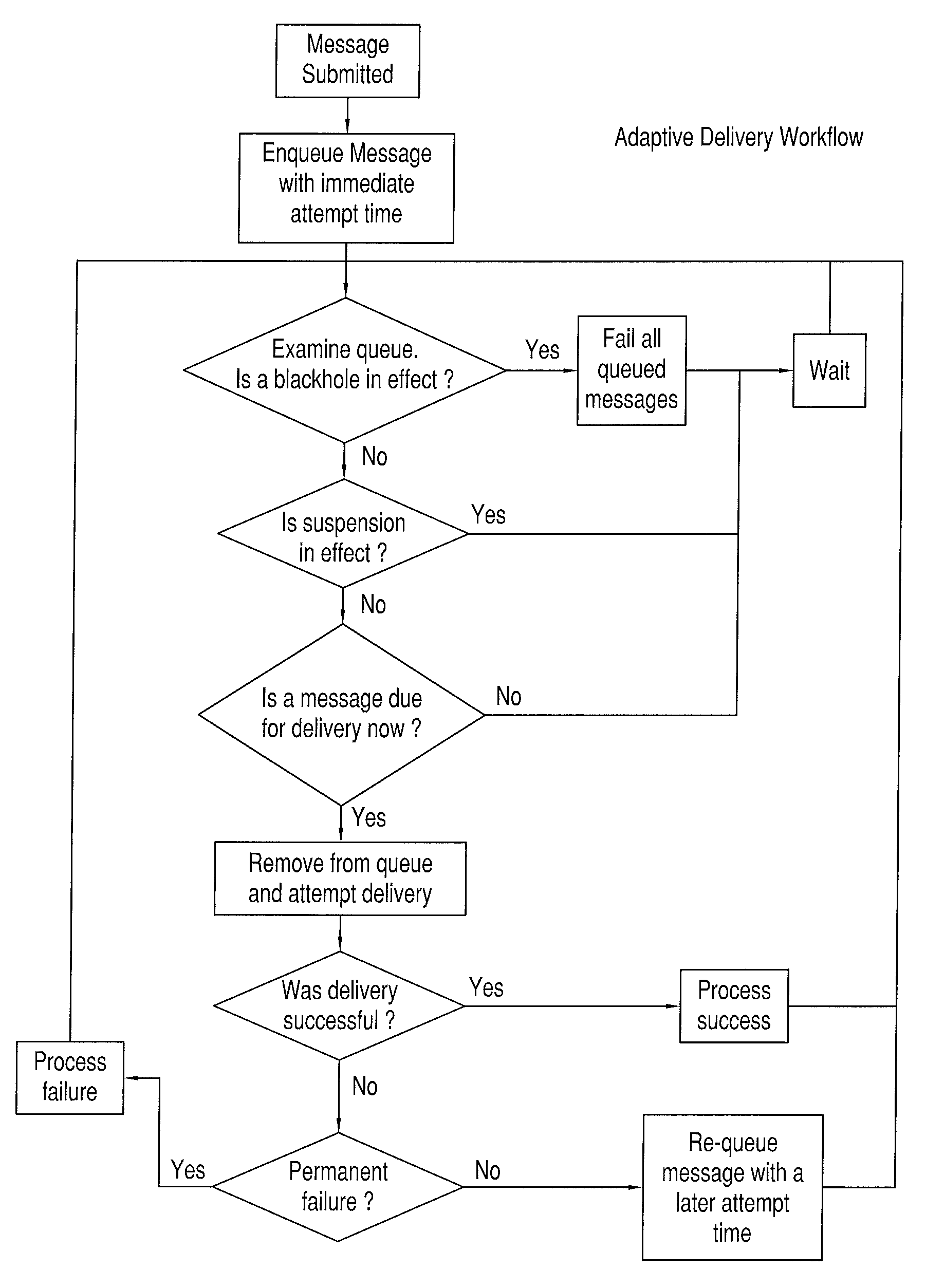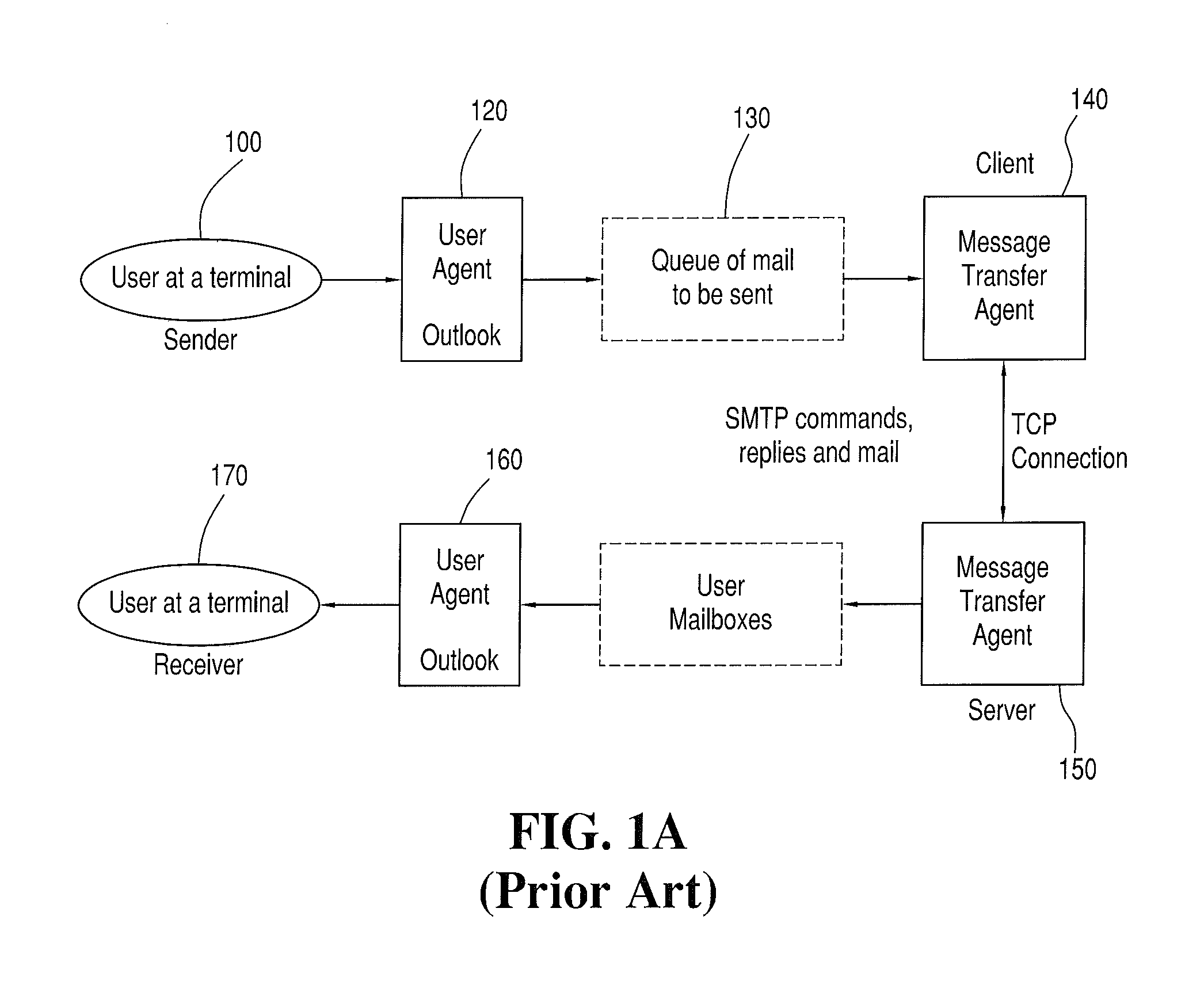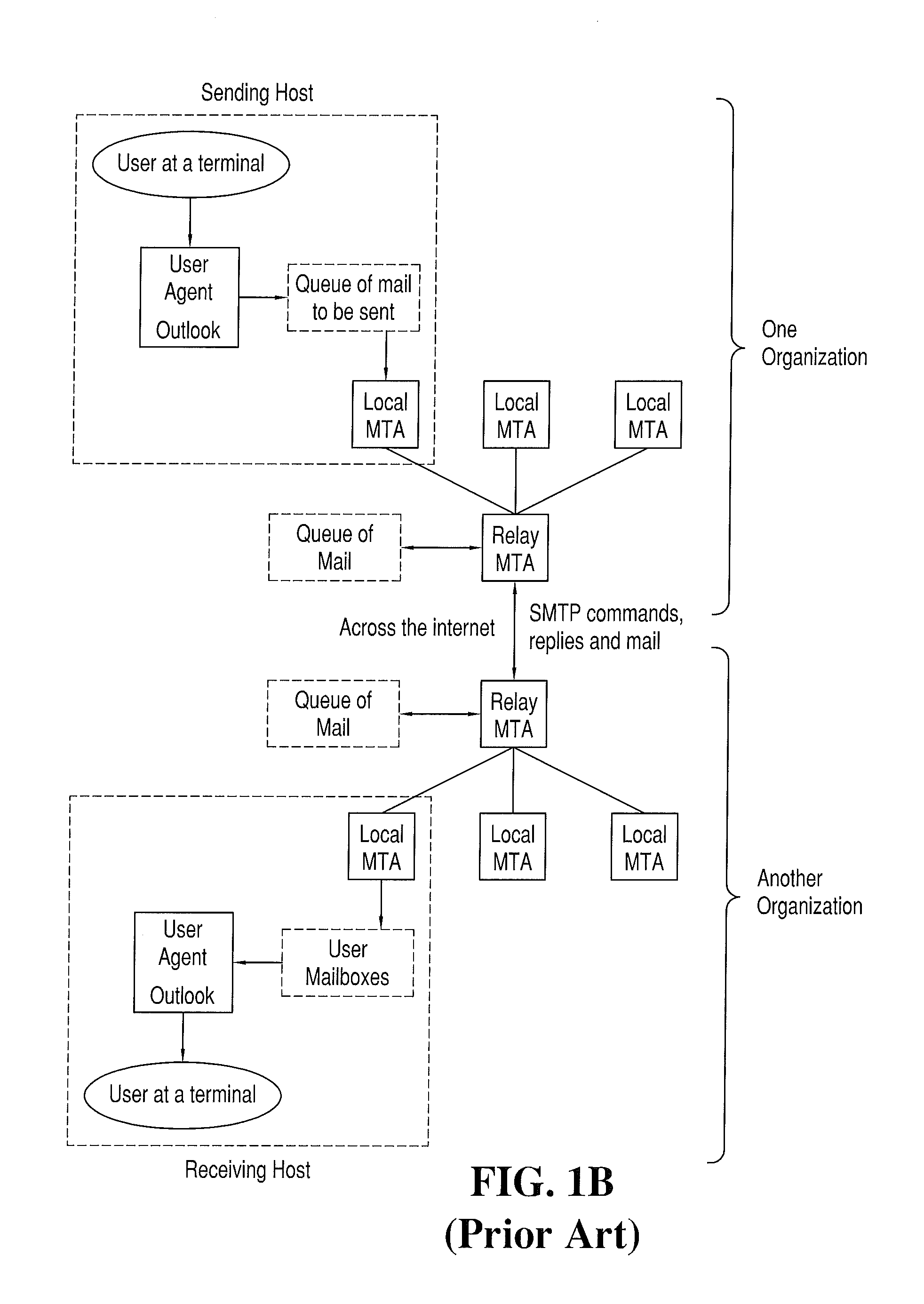Method and system for adaptive delivery of digital messages
a digital message and adaptive technology, applied in the direction of digital transmission, data switching network, electrical equipment, etc., can solve the problems of failure, message sending system may send digital messages to the receiving domain, and existing digital message sending systems are sometimes unsatisfactory, so as to achieve convenient, flexible and effective
- Summary
- Abstract
- Description
- Claims
- Application Information
AI Technical Summary
Benefits of technology
Problems solved by technology
Method used
Image
Examples
Embodiment Construction
[0055]Turning now to FIGS. 1A-20, FIGS. 1A-2 illustrate the components and method steps employed in traditional E-mail transmission from a sender's terminal 100 to a recipient's terminal 170, as discussed above.
[0056]The system and method of the present invention (as illustrated in FIGS. 3-13 and 14-20) is readily implemented using traditional computing and data transmission equipment (e.g., using hardware similar to the components shown in FIGS. 1A and 1B), when programmed to perform the method steps described below. At the outset, it is helpful to define nomenclature or terminology.
TERMINOLOGY
[0057]Throughout the remainder of this description, when the term “per-domain” is used, it indicates some preference or behavior that is scoped to a given recipient system. For instance, when referring to email, joe@example.com and bob@example.com are two distinct recipients that are serviced by the same email domain (i.e., example.com). It is typically the case that the receiving system for ...
PUM
 Login to View More
Login to View More Abstract
Description
Claims
Application Information
 Login to View More
Login to View More - R&D
- Intellectual Property
- Life Sciences
- Materials
- Tech Scout
- Unparalleled Data Quality
- Higher Quality Content
- 60% Fewer Hallucinations
Browse by: Latest US Patents, China's latest patents, Technical Efficacy Thesaurus, Application Domain, Technology Topic, Popular Technical Reports.
© 2025 PatSnap. All rights reserved.Legal|Privacy policy|Modern Slavery Act Transparency Statement|Sitemap|About US| Contact US: help@patsnap.com



